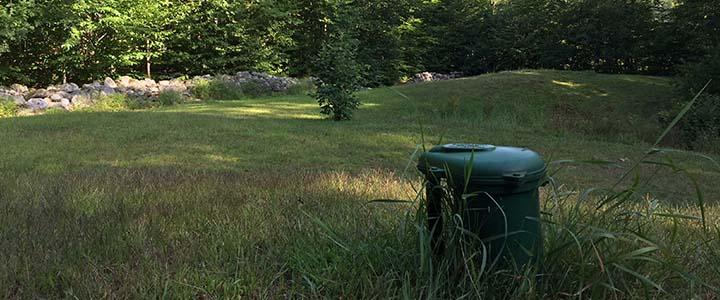
Commissioner's Column: It just rained cats and dogs. Why is my well still low?
NHDES recently published an article in our Fall issue of Supply Lines with the Source that explains why NHDES continues to be concerned about the quality and quantity of well water even after we get rain, especially during the summer months. Given the fact that parts of northern New Hampshire, according to the U.S. Drought Monitor, are abnormally dry and are in some locations still experiencing moderate and even severe drought conditions, I felt that it would be a good opportunity to share the following article to help educate well owners on the well recharge process:
After a year of droughty conditions across the state, record high rainfall amounts in July finally brought some relief, particularly to southern and central New Hampshire. But many water suppliers were not so quick to roll back the message to conserve water for three reasons: most water systems rely on wells, groundwater levels generally lag behind in drought recovery, and drought conditions could return.
There are several reasons for a lag between significant precipitation and the replenishment of groundwater supplies.
- When it downpours, soils cannot absorb the rain as quickly as it falls. The result is more runoff into surface waters.
- During the summer growing season, most of the rain that does infiltrate is taken up by plants and transpires back into the air through photosynthesis. In winter the ground is frozen, reducing recharge. Significant groundwater recharge normally occurs in the early spring and in the fall.
- Local land use and development also play a large role. The more developed an area, the less groundwater recharge is possible. Roads, parking lots, driveways, roofs and compacted soil are all impervious surfaces. Water cannot seep through. Instead, water that falls on impervious surfaces contributes to stormwater runoff (the #1 water pollutant in New Hampshire), that quickly runs into surface water.
- It takes time for water to infiltrate into the unconsolidated materials that feed dug wells and even longer to fill the bedrock fractures beneath the unconsolidated materials that feed bedrock wells.
With all that in mind, it was difficult to predict how groundwater levels would respond to an unusually large amount of rain falling on droughty soils in the middle of the growing season.
Well recovery is dependent on localized conditions such as topography, geology, climate and local development. Over the summer, we saw this reflected in the state’s groundwater level monitoring network. Sampling of these wells scattered across the state in mid-July and again at the end of July revealed that while wells were generally recovering, some had not.
Groundwater is dynamic and hard to gauge. The best thing a water system can do to manage supplies during a drought is to monitor the system’s well and surface water levels and system demands. The data will help your water system to make decisions about timing of conservation messaging and drought restrictions.




